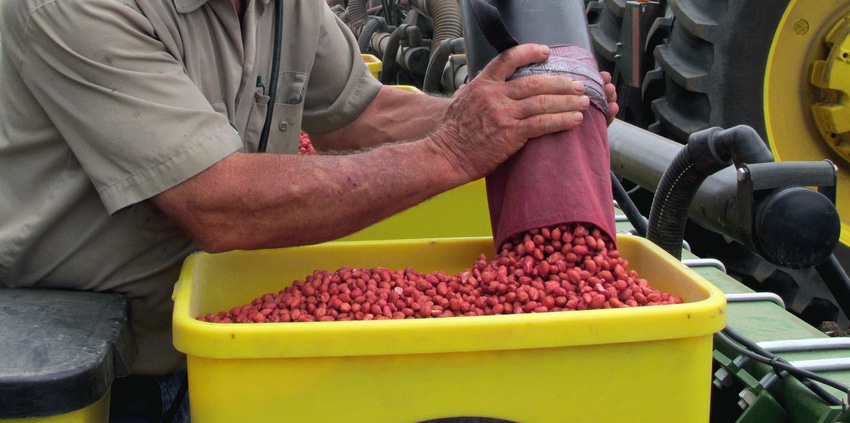January 30, 2015

It was a “parking-on-the-grass” crowd at the recent Georgia Peanut Farm Show on Jan. 15, as producers from throughout the lower Southeast poured into Tifton for the 39th annual event. It’s estimated that more than 2,100 attendees took this prime opportunity to learn more about the latest peanut products, services and research.
And while Extension specialists who spoke at the University of Georgia Production were throwing caution flags left and right – urging proper restraint when making planting decisions this year – it was clear the expectation is that peanut acres will increase in most states, possibly significantly.
Georgia’s new Extension peanut agronomist Scott Monfort advised growers not to shorten their crop rotations, fearing the certain negative impact on yields. And Extension economist Nathan Smith warned about the most immediate impact of overly increasing peanut plantings – glutting a market that’s already struggling to work through oversupply issues.
Smith says avoiding a return to a major oversupply like in 2012 means limiting the increase to 15 percent or less – a tall order for U.S. peanut producers when options are so limited. Increasing plantings above 1.5 million acres will tax current infrastructure for handling and storage, especially if yields are better than trend, he says.
“This would be an even bigger problem for 2016. Overall, 2015 will be a year in which planting decisions will be key for peanuts, and it will be difficult to show positive cash-flow for most crops,” he says.
While urging caution when making planting decisions for 2015, he admits there aren’t many other options available to growers, at least not now.
The University of Georgia 2015 budgets for peanuts, cotton, corn, grain sorghum and soybeans show peanuts in a relatively good position in terms of returns above variable costs. “However, prices for cotton, corn and soybeans have been in a downtrend and are looking for the bottom. Where they are at planting time may be different, and actual returns would change as price, yield and cost changes,” he says.
A new factor in planting decisions this year is, of course, the 2014 Farm Bill, which will affect about 1.5 million acres in Georgia, says Smith. This is roughly how many generic base acres are in the state.
The generic base acres can be temporarily assigned to a covered commodity base if planted to the covered commodity. There are 21 covered commodities including peanuts, corn, grain sorghum, soybeans and wheat. Other small grains and oilseeds are included. Each of these crops, with the exception of oats, has a good possibility of triggering a payment in 2015.
Peanuts, says Smith, could have a $100-per-ton Price Loss Coverage (PLC) payment. “Peanuts planted on farms with generic base will have a safety net that looks to be between $470 and $500 per ton in 2015, and this will encourage more peanuts to be planted.”
The worry is overplanting peanuts in Georgia and abandoning three and four-year rotations, he says. The average crop mix in the state shows 375,000 acres of corn, 560,000 acres of peanuts, 50,000 acres of grain sorghum, 235,000 acres of soybeans, and 285,000 acres of wheat.
Given the current outlook on costs and returns, the mix is expected to swing towards more peanuts and less corn and wheat, says Smith.
But, the expected Agricultural Risk Coverage-County (ARCO-CO) payment on a statewide basis for Georgia could make some other crops a bit more attractive, hopefully limiting some of the incentive to overplant peanuts, he says.
Most everyone agrees there will be an increase in U.S. peanut acres in 2015, but the trick clearly will be to temper enthusiasm with caution. With improved varieties that’ll average 4,000 pounds per acre even in a drought year and a newly minted reputation as the world’s premier low-cost, high-quality producer, it would appear that the only thing presenting an immediate obstacle for the U.S. peanut industry is its own success.
About the Author(s)
You May Also Like






